If you're regularly creating the same type of documents such as contracts, proposals, quotes, or monthly reports, you may be facing these problems:
- Manually pulling data from multiple sources, performing elaborate calculations, and creating visuals to represent the information is a long and time-consuming process.
- Even after spending hours (or days) checking for errors, it’s difficult to ensure the documents are completely error-free.
Document automation software solves these problems by letting you automatically pull data from multiple sources and compile that data however you want. This means you can create any report in a fraction of the time it takes to create the same report manually and be confident that all information is free of human error. However, not all document automation software is the same. Some document automation software require advanced technical skills while others limit the type of documents you can create.
In this post, we’ll cover the capabilities and level of skill required for 5 document automation software — starting with our own solution, Bigtincan.
Document Automation Software
If you’d like to learn how to streamline and automate the process of document creation with Bigtincan, book a demo here.
#1. Bigtincan: User-friendly document automation software for any team
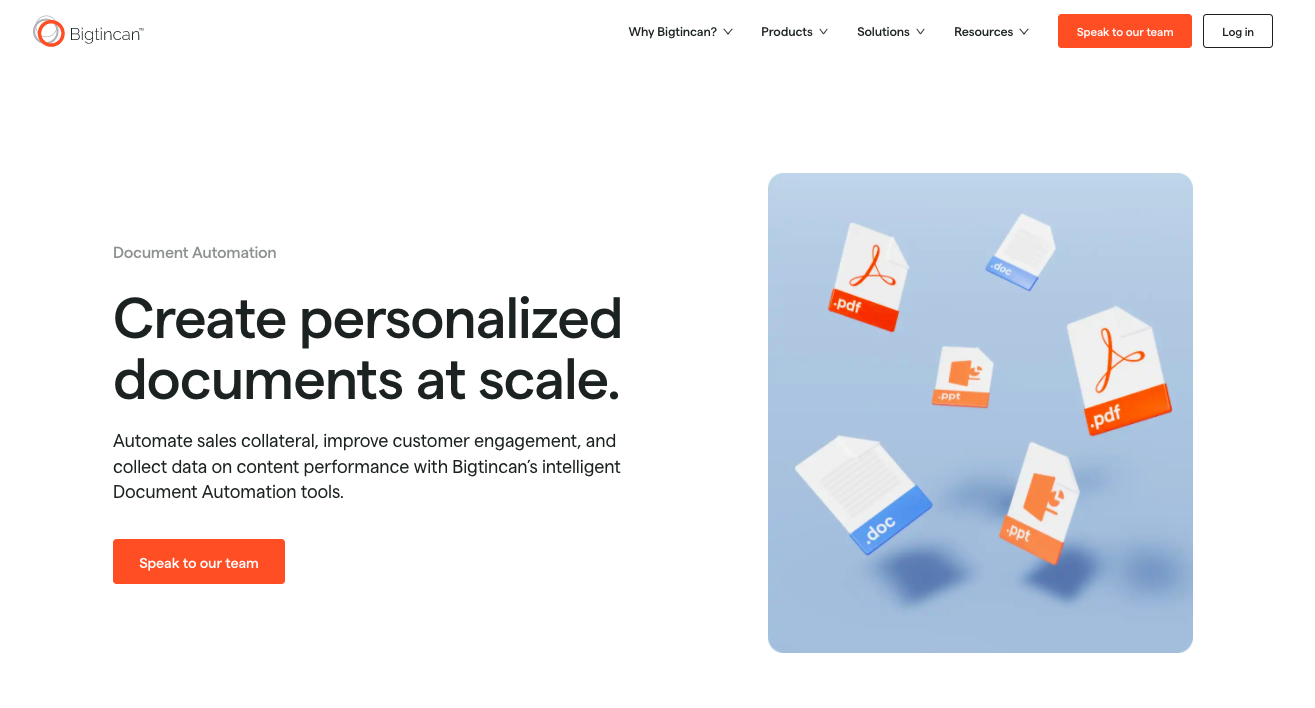
Create error-free, data-driven content within hours (not days or weeks)
Many document automation software require that each process or step be programmed manually with code. For this reason, many companies find that they need to hire a specialized analyst or developer in order to use the software.
In addition to the extra cost of employing a trained specialist, you’ll also be dependent on that analyst to set up all automated processes and make any additional edits to that document automation system. Many companies find this requires a lot of back and forth with the analyst which creates delays in document creation.
Bigtincan, on the other hand, makes it possible for any business person who has a good understanding of commonly used graphing/calculation tools, like Excel, to manage document automation.
Here’s how it works.
The first step is to figure out the desired output of the document. This includes outlining each piece of information that needs to be included and how that information needs to be displayed. You’ll also decide which elements of the document will change and need to pull data from outside sources (e.g. graphs, client information, etc.) and which elements will remain static (e.g. titles, your company logo, etc.).
Next, you create a template of the document by building out connections to data sources for each changing element and by arranging the static elements of each page using Bigtincan’s wizard-driven automation.
Instead of writing code, you will be taken through a straightforward step-by-step process where you choose from dropdown lists of options, arrange visuals using a drag-and-drop editor, or make simple entries into text boxes (i.e. URLs of the data sources, file names, etc.).

Data can be pulled from nearly any data source you need to create the document templates including CRMs (including Salesforce), content repositories (such as Google Drive, Dropbox, etc.) and more.
A dedicated Bigtincan team will be available to walk you through the process, but many companies find they’re easily able to create any document template with minimal support.
Once you’ve filled in each piece of the template, the document is ready to be created. With just a few clicks, anyone will be able to pull up the template, make additional selections such as which customer the report is for or which products to include in the proposal, and quickly generate an error-free, customized document.
Reports can be generated on an individual basis (e.g. for one client or one job) or as a batch (e.g. quarterly reports for all clients).
These documents can also be scheduled to be automatically generated at any given time. However, many teams find it’s difficult to determine when the new information is ready (for quarterly reports, for example) or when exactly they will need the next document. Teams using Bigtincan’s document automation software find it unnecessary to schedule the document creation because it’s so easy and quick to generate even large batches of complex documents.
Update text across all reports from one central location
As mentioned in the previous section, blocks of text can be pulled from content stored in any repository to build document automation templates in Bigtincan. This means you’ll be able to leverage content you already have without the manual process of copying and pasting.
Using Bigtincan’s document automation templates, the content will be copied from the original source and inserted into the relevant portion of the document each time a document gets generated.
For example, let's say you just updated the master copy of your terms of agreement for sales contracts. The next time a rep generates a sales contract, the template will automatically pull in the updated version from the master copy.
This allows you to update SLAs, disclosures, and other regulation sensitive material in just one place and know that the updated version will be used in all documents from that moment forward.
This frees up time for compliance officers and managers because they don’t have to update each business document template — instead they can control all legal messaging from their preferred repository.
If you’re interested in learning more about how Bigtincan helps you manage all your content from one place without changing anyone’s workflow, you can read this article on enterprise content management software.
Securely share fillable forms or questionnaires with external recipients
So far, we’ve seen how Bigtincan helps companies create presentations, reports, fact sheets, pitch books, and more that can be sent to other people. However, companies often also need to generate fillable forms or questionnaires in order to gather information from clients or customers.
For these types of documents, Bigtincan offers fillable PDFs that allow the recipient to enter information in certain portions of the document while other areas stay secure and static. These fillable PDFs can be created from a document generated using automation or from any content you choose.
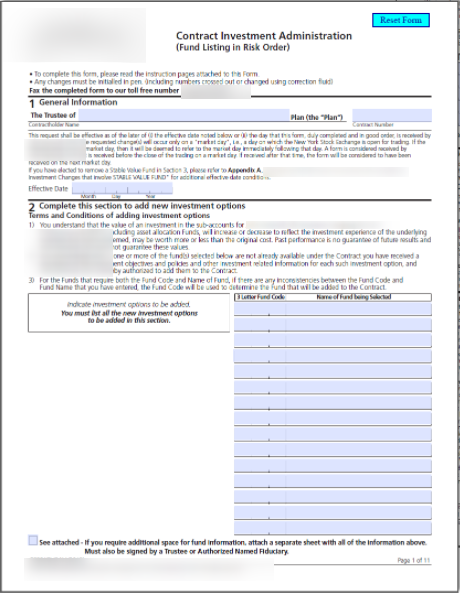
This lets you share highly sensitive information without losing control of the document. You’ll be able to add or remove information from the microsite at any time, control whether or not the document can be downloaded, and only give access to certain individuals.
Bigtincan microsites also give you real-time information on whether or not a document has been opened and what information has been filled in. This can help you:
- Monitor time-sensitive situations. For example, if a follow up notice has to be sent 10 days after the recipient viewed the document, you could determine the 10 day mark down to the minute the document was opened.
- Manage multiple tasks simultaneously. For example, if a client has filled out enough information for you to run a credit check, you could start that process before they’ve finished filling out the remaining details needed for other tasks.
Microsites can also be used as a digital sales room for you to share product information and gather detailed buyer analytics. Combined with document automation, this gives you the ability to quickly generate a sales proposal or product pamphlet that has been customized for the client and share all relevant material with the client. Then, you’ll also know exactly when they viewed the content, which piece of content they were the most interested in, and where they hesitated.
Generate visually on-brand documents every time
Often, manual document assembly means compiling screenshots and data in generic-looking Microsoft Word documents or Excel spreadsheets. Document automation helps create cohesive documents with consistent visuals. Many document automation tools will provide basic customization options such as the ability to upload a logo or choose from a preset list of fonts and colors.
Bigtincan takes visual customization a step further and lets you customize the visuals down to the pixel and color code.
This enables your marketing team to customize each document template using a drag-and-drop editor so everyone has quick access to on-brand collateral. Every element of every document will look like it was built by and for your brand.
Microsites are also fully customizable. Instead of sharing generic documents by email, you’ll be able to direct clients to a personalized, online repository with professional content that all fully represents your company brand.
If you think Bigtincan could be the best document automation software for your company, book a demo today.
Other document automation platforms to consider
#2. HotDocs
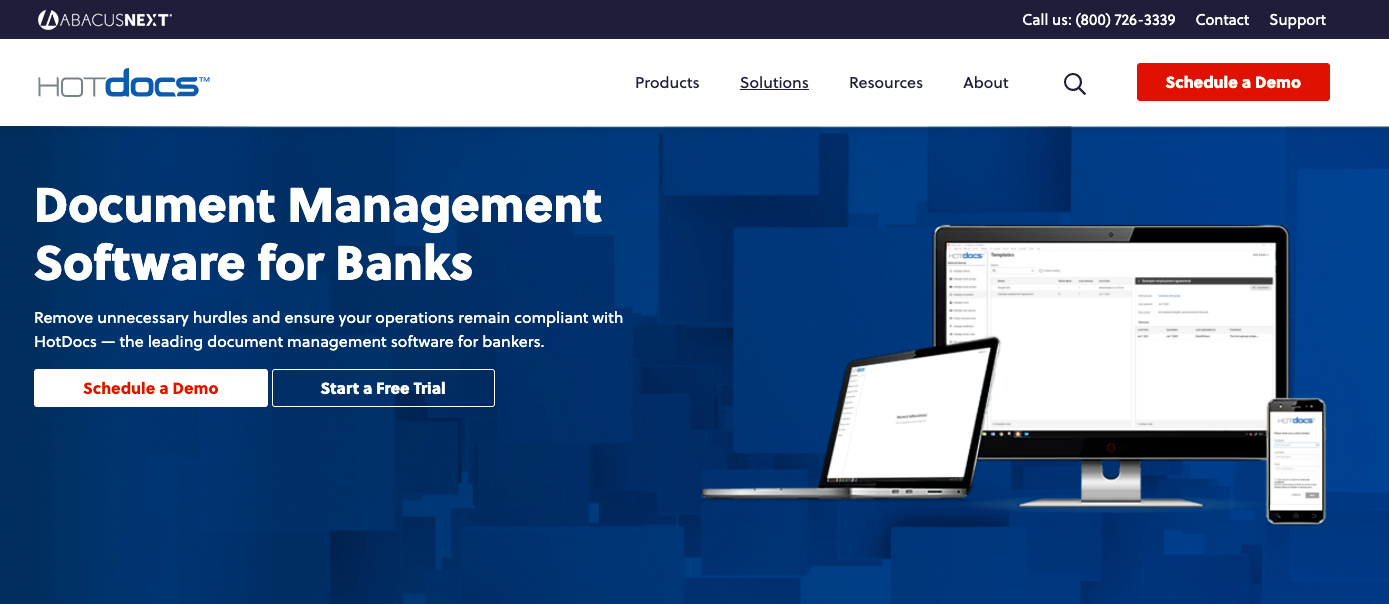
HotDocs is a document automation platform with simple management controls such as permission controls, version controls, and user groups access.
Though user reviews mention that it integrates well with Microsoft Word, some users share that you need to have backend and coding experience to use other integrations. HotDocs may be suited for some companies in the financial services industry because of their ability to handle complex documents like term sheets, client credit documentation, facility letters, and security certificates.
#3. Documate
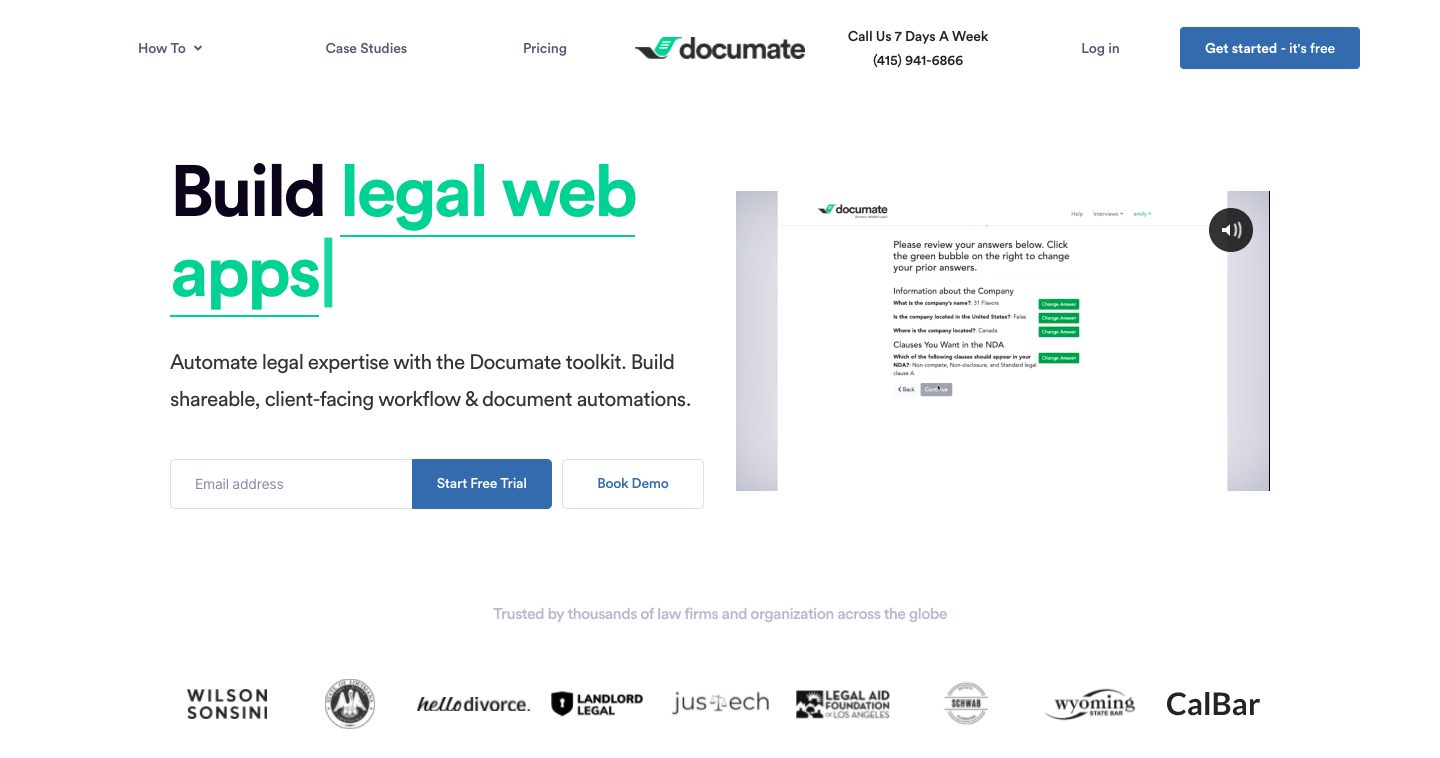
Documate is a document automation tool that comes with a simple user interface, with a focus on creating client-facing forms rather than any type of document.
Users say it simplifies their workflows and speeds up document management and production. Though their website mentions that it’s no-code, many reviewers say that you need to add logic jumps, conditions, calculations, and formatting specifics.
Documate is geared towards legal document automation.
#4. PandaDoc
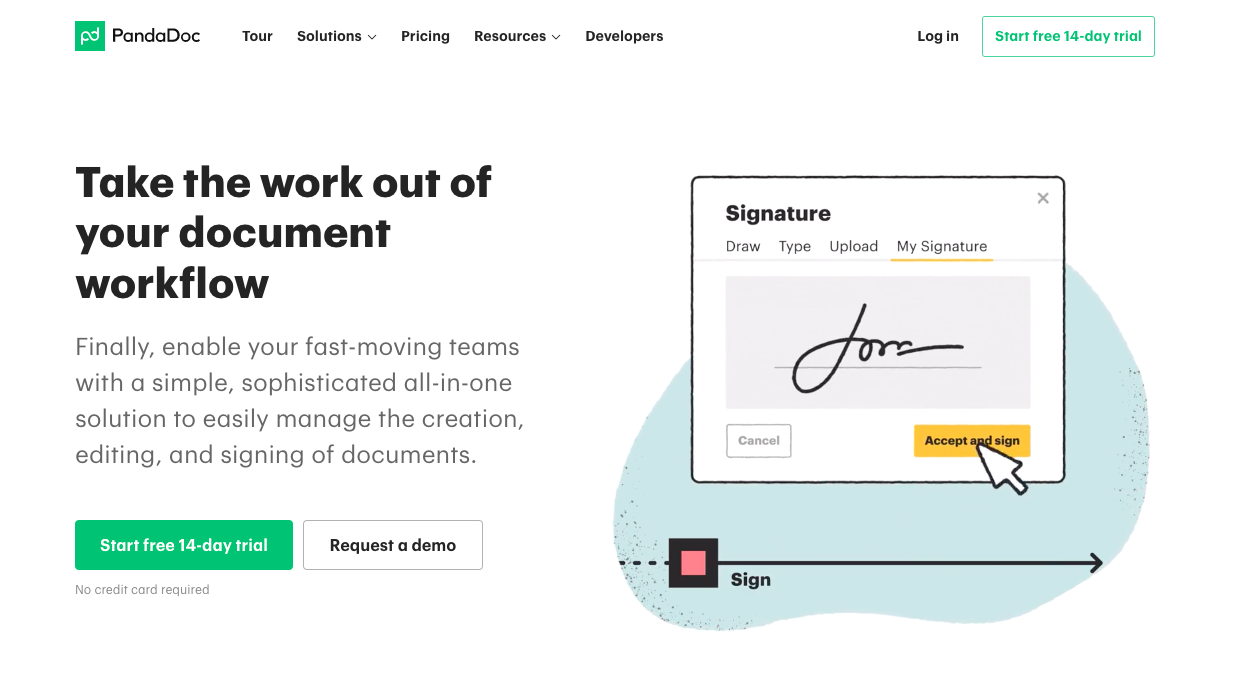
PandaDoc’s document assembly software streamlines the creation, management, and approval of docs like proposals, contracts, and quotes. They offer template creation with a drag-and-drop editor and a built-in notification feature to help users keep track of which documents still need input.
With features like eSignatures, custom fields, and approval workflows, you can create documents that are approved, compliant, and secure.
PandaDoc may work well for HR, marketing, customer success, and sales use cases.
#5. Docupilot
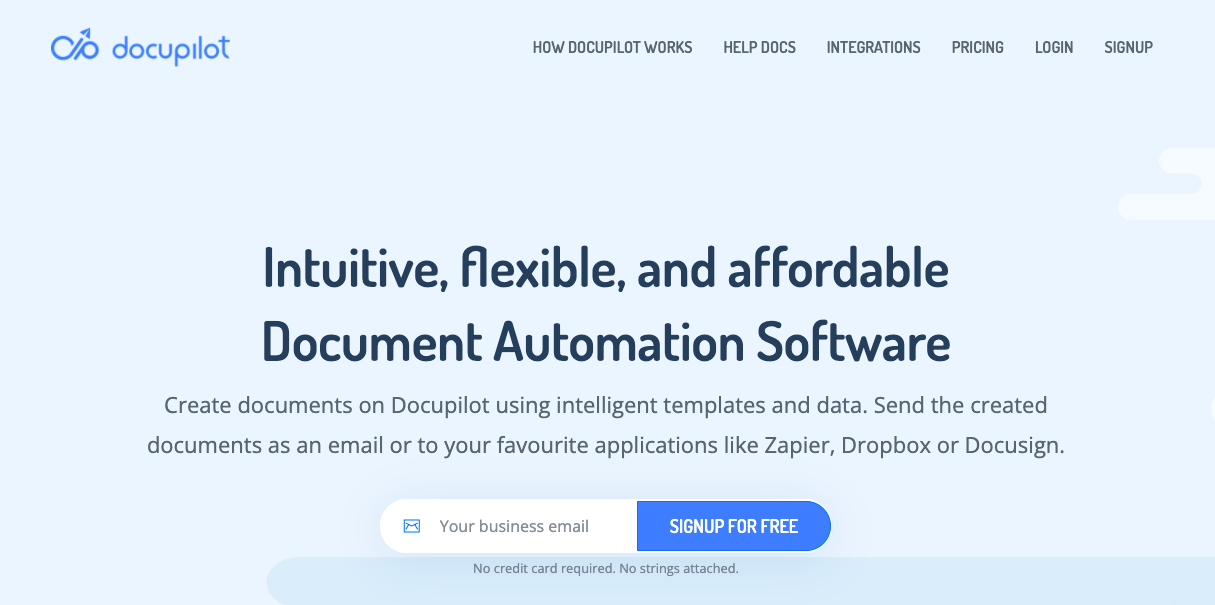
Docupilot provides new document generation for:
- Proposal & quotes
- Contract & agreements
- HR documents
- Purchase & sales orders
- Invoices & receipts
These documents can then be sent to any recipient via email. They also integrate with tools such as DocuSign and Zapier. User reviews suggest they have good API integrations but the pricing may be too high for small businesses.
Create more error-free documents in less time with Bigtincan
Bigtincan gives any savvy business person the ability to create fully customized document automation templates for any report, proposal, product pamphlet, or business document you need. Instead of spending hours or days each month to create the same documents multiple times, simply click a few buttons and generate fully on-brand, error-free, personalized content.
If you’re ready to see how Bigtincan’s document automation software can work for you, book a demo today.
